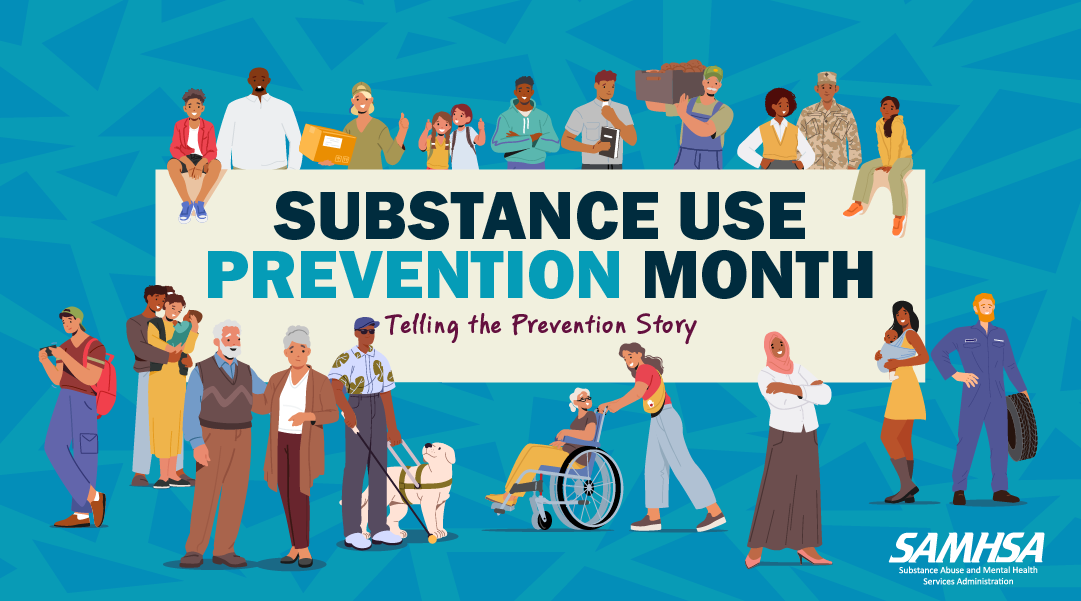A common question EMDR therapists ask in the EMDRIA communities is “Can I use EMDR with people who use prescribed medication, illicit medication and/or alcohol and other drugs?” We wanted to learn more about the role EMDR therapy might play with clients who use substances, both addictive or not addictive.
What Role Can EMDR Therapy Play With Active Medication or Substance Use?
Guest Blog Post by Jo Pioro, MA, PgDip/MSc, PgCert
In regard to the question: “Can I use EMDR with people who use prescribed medication, illicit medication, and/or alcohol and other drugs (AOD)?” Yes, it is entirely possible with consideration, planning, and including the usual therapeutic tools of assessment for mood and risk.
This will be a brief introduction to broaden understanding and encourage EMDR therapists to work inclusively with people using/overusing medication and alcohol and/or other drugs (AOD). If we request people to be abstinent before EMDR therapy, the perfect window might never occur. An important baseline for me is that I don’t focus the EMDR therapy on the medication and/or AOD use; rather, I focus on reducing distress and processing trauma in a harm reduction model. In my experience, this is the catalyst for safer and healthier behaviours, which I have witnessed many times. Some people do become abstinent/sober after EMDR therapy, but that is their choice; it is not directed by me as the EMDR therapist. I prefer people to develop their own agency.
 This topic is important to me. I have worked in addiction and mental health services for over 20 years, acquiring vast experience, and have worked with a wide range of people who were using medications, alcohol, and illicit drugs. I have also worked and collaborated with a range of doctors. Most recently, I worked with addiction medicine specialist doctors who have extensive pharmacotherapy knowledge and are remarkable educators. During my master’s in addictions, I was specifically interested in pharmacology and pharmacotherapies, and how medications and drugs interact and impact both the brain and behaviour.
This topic is important to me. I have worked in addiction and mental health services for over 20 years, acquiring vast experience, and have worked with a wide range of people who were using medications, alcohol, and illicit drugs. I have also worked and collaborated with a range of doctors. Most recently, I worked with addiction medicine specialist doctors who have extensive pharmacotherapy knowledge and are remarkable educators. During my master’s in addictions, I was specifically interested in pharmacology and pharmacotherapies, and how medications and drugs interact and impact both the brain and behaviour.
In my experience, EMDR therapy is safe and effective with people who use medications and AOD in the following circumstances:
- if the person can stay in the window of tolerance
- if they are not over-intoxicated in session
- if they can show up weekly
- if they can collaborate in their case conceptualization and formulation for their EMDR therapy plan
- if they can manage risk and difficult emotions in between sessions to increase safety and regulation
Factors to consider with clients who use medications and AOD
The population of people who use substances come from a diverse range of cultural communities. All clients are their own experts by experience. If you build a trusting and non-judgmental relationship, they will inform and lead you. This collaborative therapeutic relationship will give you a clearer lens of how to set up the EMDR session.
Likely, you have already worked with people who did not disclose their medication and AOD use. Contrary to the continued stigmatization of AOD users, we cannot tell just by looking at people whether they use substances. The other issue is self-medicating; some people use illicit medications, as they can be easily purchased through the internet or dark web drug markets. You can see the statistics here for American use: https://drugabusestatistics.org/. Importantly, these are self-reported answers to questionnaires, so we need to consider the possibility that many people minimize their medication/AOD use and under-report consumption. This is normally a shame-based issue and fear of rejection from services, but it may also be personal denial.
There are several risk issues and behaviors to contemplate regarding over-intoxication, especially with new novel synthetic substances that have entered worldwide drug markets, including illicit medications, where dosage and content are unpredictable. Polysubstance use has always been high risk, but it is a common practice as part of addictive behaviour. Providing harm reduction psychoeducation is essential in this space to reduce overdose and other harmful practices.
It is crucial to understand the tolerance levels of the people you are working with who use medication and AOD, as this is fundamental to the impact on decision-making for progressing with EMDR therapy. We tend to interpret others’ medication and AOD use, thinking of ourselves and the effect it would have on us. People who have been using medications/AOD have usually been consuming them for a considerable time and have built up a tolerance to their preferred medications/AOD, hence some people don’t appear over intoxicated and can function in their lives.
Assessment guidelines for EMDR therapy
Below is some guidance from my experience for triage and assessment regarding medication and AOD use to consider in preparing for EMDR therapy:
- I never say never to the client regarding future treatment using EMDR. I say ‘At this point, I want you to follow the pre-EMDR therapy plan to get prepared for EMDR in the future.’ In this way, we can work toward a goal-oriented plan.
- I assess if their medication and AOD use is organised enough for them to take responsibility to not use AOD before an EMDR therapy session.
- I assess if a person needs to take a small amount of medication/AOD before a session so they are not in withdrawal. For instance, alcohol users may need some alcohol to function to get to the session.
- Cannabis is difficult to measure dosage and strength, whether it is prescribed or illicit. When working with trauma, cannabis can produce paranoia and sometimes psychosis. It can also present as derealisation/depersonalisation, where the person cannot ground themselves. I carefully assess cannabis and ask the person not to use it before the session.
- Prescribed medication has never been a problem if kept to the prescribed dose from their prescriber. Some examples are: methadone or suboxone, propranolol, naltrexone, baclofen, small doses of benzodiazepines, SSRIs, and anti-psychotics.
- A great tip is to schedule appointments earlier in the day for people who struggle to defer using before EMDR therapy.
- If I am unsure if EMDR therapy reprocessing will be effective, I usually get my answer during the earlier stages of resourcing in phase 2. People usually miss appointments or show up over-intoxicated. This is an opportunity to discuss with the person that they need to do some more work before they can commit to EMDR therapy reprocessing phases.
- Do some research on services that will work with people to prepare them or just help them to stabilise to get ready for EMDR therapy. These may be medication/AOD services, mental health, harm reduction, or peer group mutual aid meetings. It helps to signpost people for extra support, so they have intention, purpose, and goals in the preparation journey.
Beginning EMDR therapy
I use Dr. Shapiro’s standard EMDR protocol (Shapiro, 1989). I agree there are some well-evidenced addiction protocols developed, and if you use them successfully, that’s great; we all work differently. I integrate addiction models into my sessions, such as stages of change, triggers and craving, functional analysis, and motivational interviewing.
It is common to work with complex post traumatic stress disorder (CPTSD) alongside problematic substance use. My focus includes early attachment and developmental issues, complex mental health, dissociation, and parts work (Marich, 2023). For example, I have found that some parts may use medication or AOD, while others are abstinent, which can create internal conflict. I once worked with someone who was abstinent but appeared unusually sedated in session. We discovered that a younger part was overusing a specific medication. Together, we encouraged the parts to support one another in arriving at EMDR sessions without unhelpful sedation. It wasn’t perfect, but it increased understanding and led to practical solutions.
One example of the benefits of delivering EMDR therapy to people using AOD/medications is in the lead-up to a planned detox. Processing some trauma beforehand can help reduce the risk of feeling overwhelmed in early recovery. This approach supports emotional stability during a vulnerable time. If needed, I will complete the remaining EMDR therapy post-detox.
What does the research say?
Evidence for using EMDR therapy during active use of medication or AOD is limited and typically linked to abstinence-focused outcomes. As mentioned earlier, I work with individuals in active addiction to reduce trauma and distress within a harm reduction framework. However, in my experience, many clients shift to safer use, begin pharmacotherapy, or choose abstinence during or after EMDR therapy.
Regarding people using medications during EMDR therapy, Rosen et al., (2013) found that benzodiazepine use did not harm trauma processing during prolonged exposure therapy, which is an evidence-based trauma-focused therapy. Furthermore, Adams et al., (2020) reviewed the literature on EMDR and psychosis and found that participants taking antipsychotic medication during EMDR therapy experienced reductions in delusional and negative symptoms of psychosis, with fewer re-admissions to hospital.
Roberts et al., (2022) conducted a systematic review and meta-analysis of psychological interventions for comorbid PTSD and AOD and found that it was clinically meaningful to include participants who were not abstinent from alcohol, although some session attendance was affected by AOD severity. Franklin (2015) recruited participants who had ceased drinking alcohol sometime before the study and investigated whether EMDR had an impact on relapse. She suggested that being abstinent for periods prior to engaging in EMDR therapy did not correlate with more positive treatment outcomes (Kullack & Laugharne, 2016).
Swannell et al, (2025) have completed the first systemic review of pharmacological treatments for co-occurring PTSD and substance use disorders. A total of 29 papers were reviewed, including 14 RCTs, three cohort studies and one single-arm open-label trial. In addition, one long-term follow-up study of an included RCT and 10 secondary analyses of the included or external RCTs were reviewed. Sixteen pharmacotherapies were studied, including those already used for PTSD (SSRIs, SNRI, prazosin off label), AOD (naltrexone, buprenorphine, methadone, nicotine replacement therapy (NRT), and topiramate). Twenty of the 29 authors focused on alcohol dependence rather than other substances. This paper is helpful as it demonstrates and gives guidance for the use of medications within a PTSD/AOD/medications framework for evidence-based trauma therapies such as EMDR.
We now have MDMA, ketamine, and psychedelics introduced to EMDR therapy, we may have people with ADHD on amphetamine-based medications, we have a range of pharmacotherapy medications, and people who self-medicate on LSD, methamphetamine, and/or GHB, opiates, cocaine, and benzos. We can still offer EMDR therapy, be creative and curious, working with people in a safer, knowledgeable and compassionate framework.
I would encourage working toward feeling more comfortable practicing EMDR with people who use medications/AOD. The outcomes are not just addiction/medication focused but, for example, include better mental health, increased self-esteem, improved sleep, better relationships, and more regulated emotions. EMDR therapy was not developed to fix anything but to support therapeutic growth so the brain can move to adaptive resolution. Discuss your EMDR practice with your consultant/supervisor and attend training or supervision groups to increase knowledge on working with EMDR, addictions, and medications. Lastly, I hold in mind that every person I see may be using some sort of substance or medication that they might not disclose, so I approach each person with curiosity, flexibility, and a commitment to supportive care.
Jo Pioro, MA, PgDip/MSc, PgCert, BSc Hons, BA Hons, is an EMDR consultant and psychotherapist with a private practice in Melbourne, Australia. She was the clinical lead in an AOD/MH treatment service for eight years, and developed a successful EMDR clinic. Pioro was previously therapy manager in a specialist detox unit. Her doctoral Interpretative Phenomenological Analysis (IPA) research with the University of Lancashire, UK will be completed in early 2026 and explored EMDR therapy with individuals in active addiction with complex mental health. Pioro is clinically registered with Psychotherapy and Counseling Federation Australia (PACFA), and is an Accredited Consultant with the EMDR Association iof Australia (EMDRAA).
References and Resources
Adams, A., Ferguson, M., Greer, A. M., Burmeister, C., Lock, K., McDougall, J., Scow, M., & Buxton, J. A. (2022). Guideline development in harm reduction: Considerations around the meaningful involvement of people who access services. Drug and Alcohol Dependence Reports, 4, 100086. https://doi.org/10.1016/j.dadr.2022.100086
Adams, R., Ohlsen, S., & Wood, E. (2020). Eye movement desensitization and reprocessing (EMDR) for the treatment of psychosis: A systematic review. European Journal of Psychotraumatology, 11(1), 1711349. https://doi.org/10.1080/20008198.2019.1711349
Brayer, R. (2025). EMDR and psychedelic-assisted psychotherapy: Expanding healing possibilities. Focal Point Blog. https://www.emdria.org/blog/emdr-and-psychedelic-assisted-psychotherapy-expanding-healing-possibilities/
Cahoon, K. (2024). EMDR therapy and psychedelics. Focal Point Blog. https://www.emdria.org/blog/emdr-therapy-and-psychedelics/
Franklin, J. L. (2015). The effectiveness of EMDR therapy on clients with addictions [Masters thesis, Smith College, Northampton, MA]. Smith ScholarWorks. https://scholarworks.smith.edu/theses/921/
Kullack, C., & Laugharne, J. (2016). Standard EMDR protocol for alcohol and substance dependence comorbid with posttraumatic stress disorder: Four cases with 12-month follow-up. Journal of EMDR Practice and Research, 10(1), 33-46. https://doi.org/10.1891/1933-3196.10.1.33
Marich, J. (2023). Dissociation Made Simple: A Stigma-Free Guide to Embracing Your Dissociative Mind and Navigating Daily Life. North Atlantic Books.
National Center for Drug Abuse Statistics. (2025). Drug abuse statistics. Retrieved November 3, 2025, from https://drugabusestatistics.org/
Roberts, N. P., Lotzin, A., & Schäfer, I. (2022). A systematic review and meta-analysis of psychological interventions for comorbid post-traumatic stress disorder and substance use disorder. European Journal of Psychotraumatology, 13(1), 2041831. https://doi.org/10.1080/20008198.2022.2041831
Rosen, C. S., Greenbaum, M. A., Schnurr, P. P., Holmes, T. H., Brennan, P. L., & Friedman, M. J. (2013). Do benzodiazepines reduce the effectiveness of exposure therapy for posttraumatic stress disorder? Journal of Clinical Psychiatry, 74(12), 1241–1248. https://doi.org/10.4088/JCP.13m08592
Rosenhammer, D. (2021). Help or hindrance? Medication in therapy. EMDR Therapy Quarterly. https://etq.emdrassociation.org.uk/2021/07/01/help-or-hindrance-medication-in-therapy/
Shapiro, F. (1989). Efficacy of the eye movement desensitization procedure in the treatment of traumatic memories. Journal of Traumatic Stress, 2(2), 199-223. https://doi.org/10.1002/jts.2490020207
Swannell, M., Bradlow, R. C. J., Pham, D., Gabriel, J., Manahan, Y., & Arunogiri, S. (2025). Pharmacological treatments for co-occurring PTSD and substance use disorders: A systematic review. Journal of Substance Use and Addiction Treatment, 169, 209601. https://doi.org/10.1016/j.josat.2024.209601
Triana, V. (2024). Understanding substance use in teens and how EMDR therapy can support recovery. Focal Point Blog. https://www.emdria.org/blog/understanding-substance-use-in-teens-and-how-emdr-therapy-can-support-recovery/
Back to Focal Point Blog Homepage
Additional Resources
If you are a therapist interested in the EMDR training:
- Learn more about EMDR therapy at the EMDRIA Library
- Learn more about EMDR Training
- Search for an EMDR Training Provider
- Check out our EMDR Training FAQ
If you are EMDR trained:
- Check out the EMDRIA Let’s Talk EMDR Podcast
- Check out the EMDRIA Focal Point Blog
- Learn more about EMDRIA membership
- Search for EMDR Continuing Education opportunities
If you are an EMDRIA™ Member:
- Learn more about EMDR Consultation
- Find clinical practice articles in the EMDRIA Go With That Magazine®
- Search for articles in Journal of EMDR Practice and Research in the EMDRIA Library
Date
December 5, 2025
Contributor(s)
Jo Pioro
Topics
Addictions





